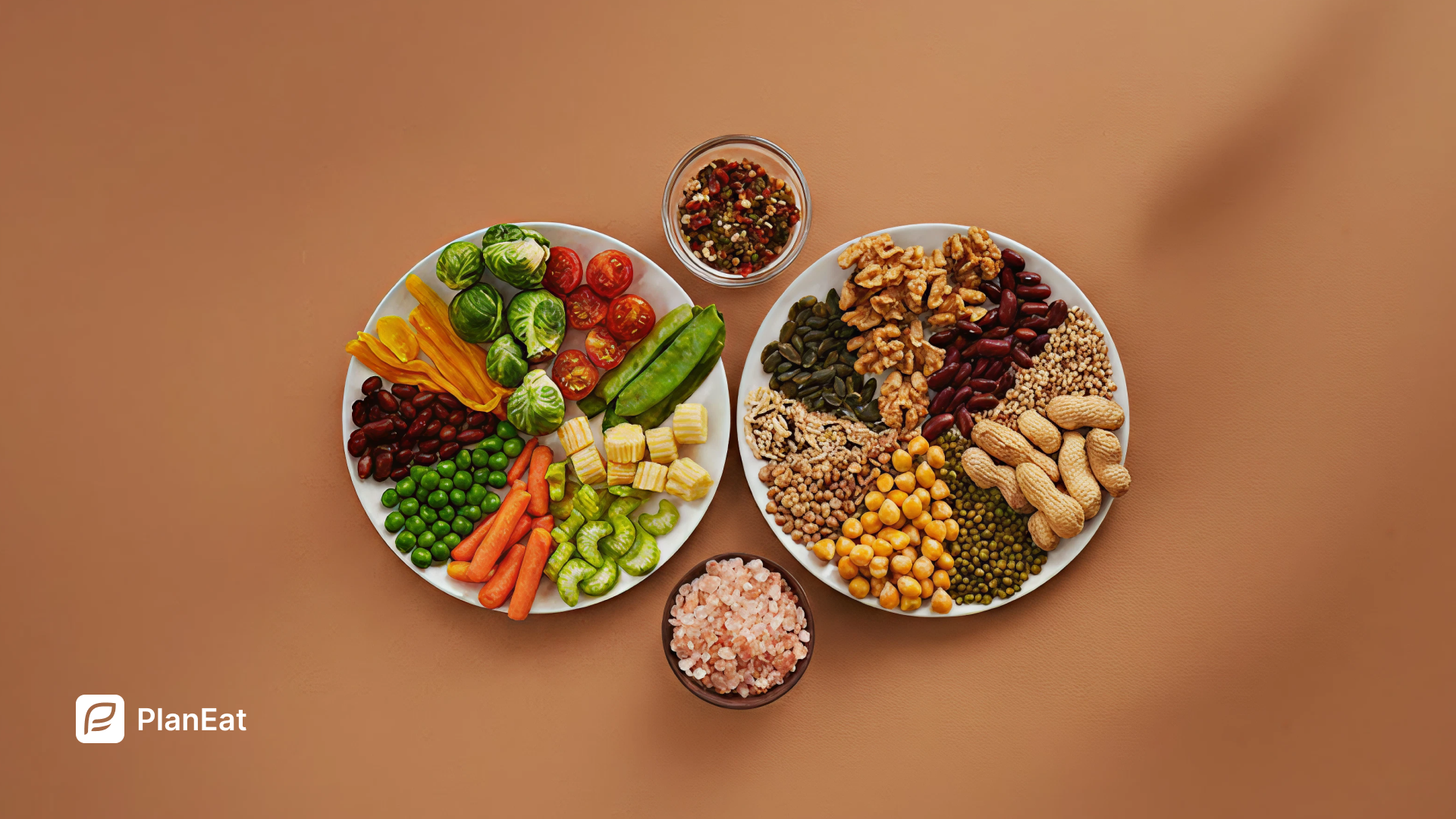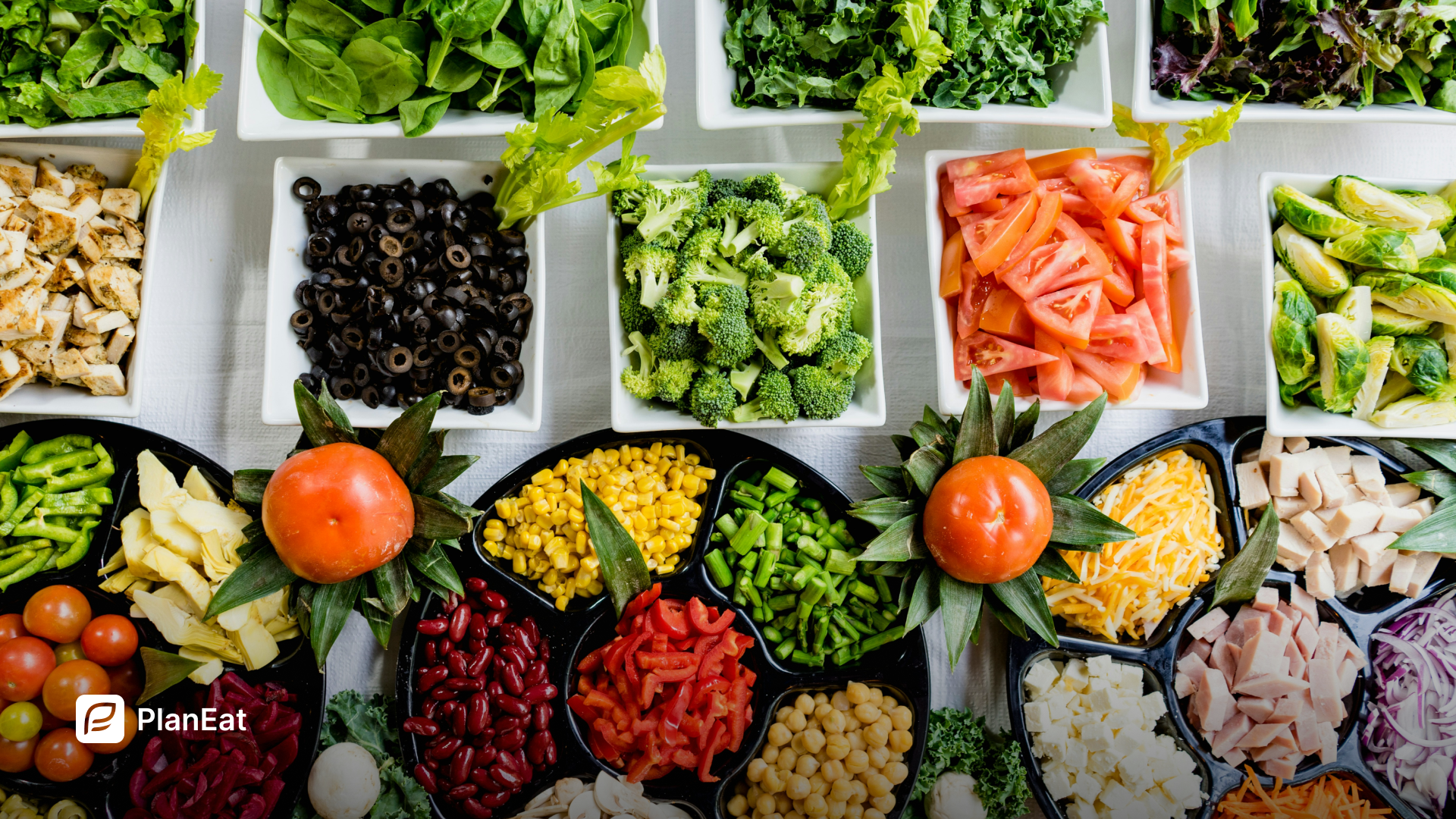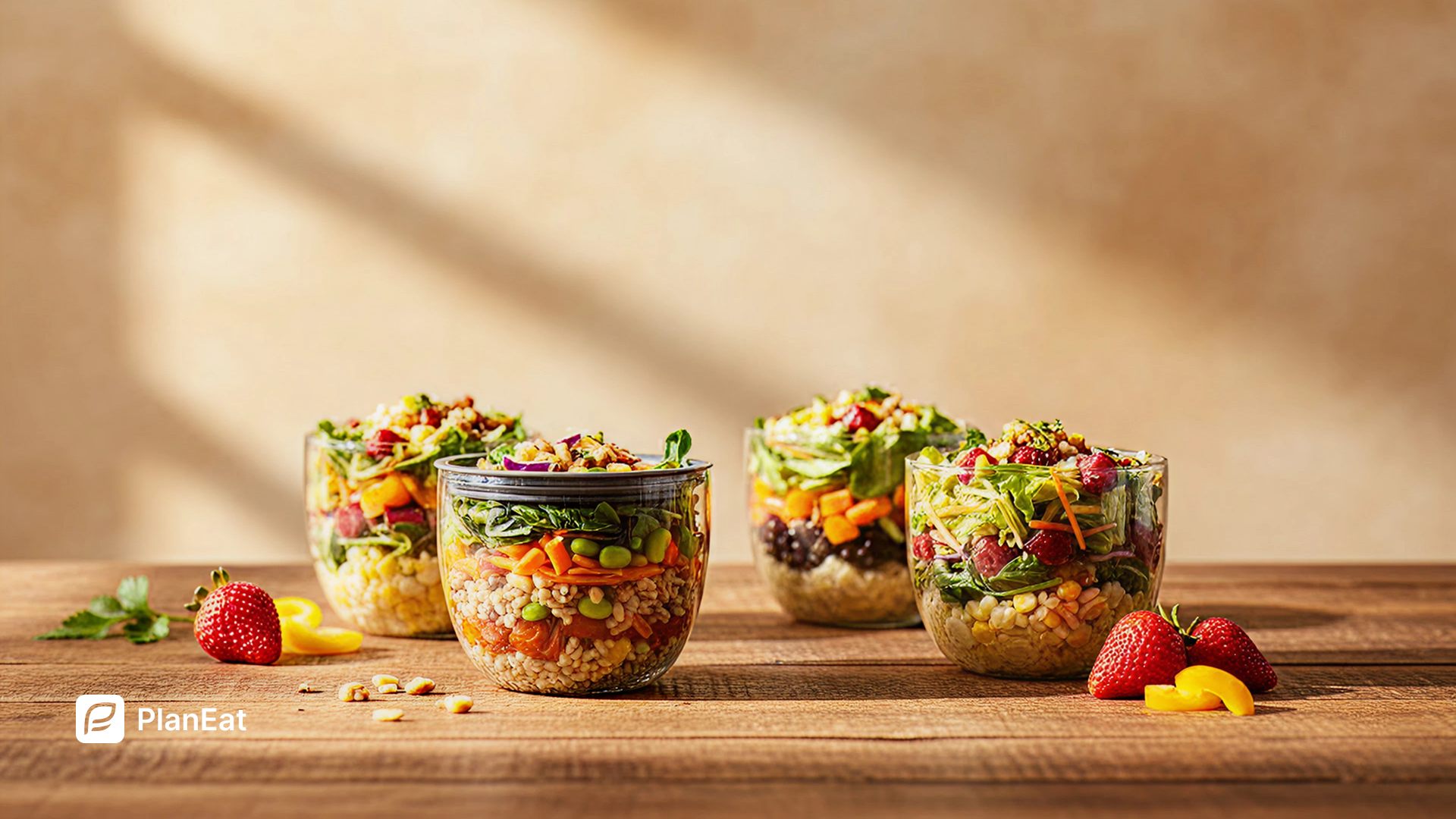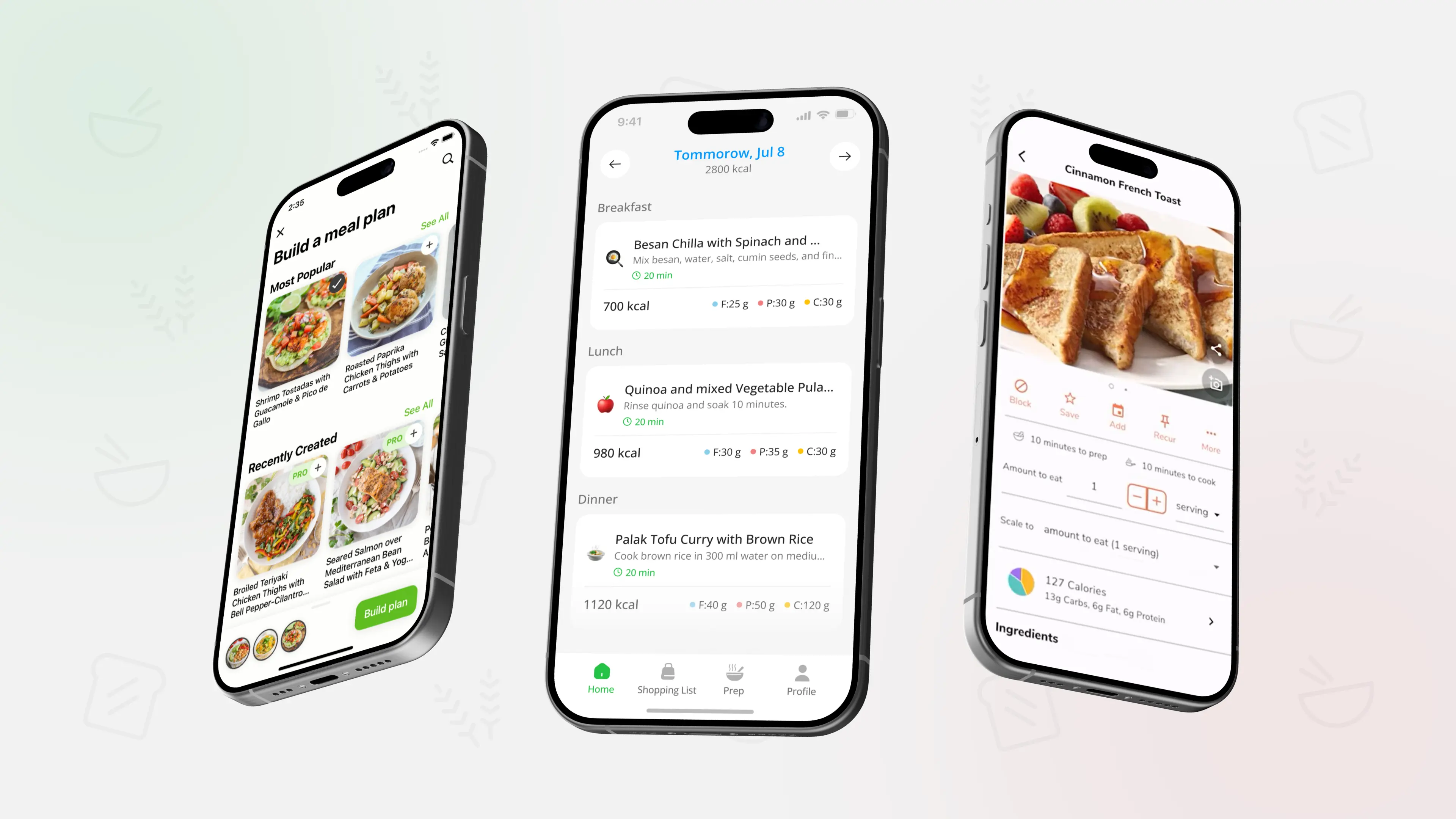Most Common Myths About Healthy Eating? (2025)
.webp)
You don’t need extremes or cleanses. Healthy eating is a repeatable pattern: protein + fiber at most meals, smart carbs and fats, water, sleep, and a simple weekly plan you can actually follow.
What “healthy eating” actually means
Healthy eating isn’t a list of banned foods. It’s a structure you can repeat on busy weeks:
• Enough: protein, fiber, and key micronutrients (iron, calcium, vitamin D, iodine, omega‑3, folate, magnesium, potassium).
• Not too much: added sugar, excess alcohol, ultra‑processed snacks.
• System over willpower: plan the week → make a grouped grocery list → simple meal prep → flexible swaps.
If you want the precise foods and portions, see our guide What Exactly Should I Eat to Lose Weight?
Top healthy‑eating myths (debunked)
Myth 1: “Carbs make you gain weight.”
Reality: Weight gain comes from consistent calorie surplus, not from carbohydrates alone. Choose fiber‑rich carbs (potatoes, brown rice, oats, whole‑grain wraps, beans, fruit) and pair them with protein and vegetables. Many realistic weight‑loss meal plans keep carbs in — they just portion them well.
Myth 2: “Eating fat makes you fat.”
Reality: Dietary fat is calorie‑dense but essential for hormones and vitamin absorption. Prioritize extra‑virgin olive oil, nuts, seeds, avocado and watch portions (a tablespoon of oil is ~120 kcal). A healthy meal plan usually includes some fat at each meal.
Myth 3: “Sugar is toxic — zero only.”
Reality: Dose and frequency matter most. Keep added sugars low, but whole fruit (fiber + water) is fine. If you enjoy dessert, have it after a protein‑rich meal to blunt the spike — not on an empty stomach.
Myth 4: “You need a detox or cleanse.”
Reality: Your liver and kidneys already detox. Cleanses mostly reduce calories and water weight. Better: regular meals with protein + vegetables, sleep, water, and walking.
Myth 5: “Gluten‑free is healthier for everyone.”
Reality: It’s essential for celiac disease or proven intolerance. For others, whole‑grain options often improve satiety and nutrient intake. Don’t remove food groups without a reason.
Myth 6: “Organic means automatically healthier.”
Reality: Nutrient differences are small. Wash produce (organic or conventional), aim for variety, and choose what fits your budget and taste. A realistic plan beats perfect labels.
Myth 7: “Late‑night eating always causes weight gain.”
Reality: It’s your daily balance and sleep that matter. Heavy late meals can disrupt rest, but a small planned snack is fine if it helps you stay on track.
Myth 8: “Eat every 2–3 hours to ‘stoke metabolism.’”
Reality: Meal frequency minimally affects metabolism. Choose a rhythm you can repeat — for most people three meals + 0–2 snacks is plenty.
Myth 9: “Calories don’t matter if food is ‘clean.’”
Reality: Food quality supports health and satiety, but energy balance still applies. Olive oil, nuts, and “natural” treats add up quickly; estimate with the hand‑portion method if you dislike counting.
Myth 10: “All processed food is bad.”
Reality: Not all processing is equal. Minimally processed staples (frozen vegetables, canned beans, yogurt) are convenient and nutritious. The issue is ultra‑processed snacks engineered to be over‑eaten.
Myth 11: “Protein is only for athletes.”
Reality: Protein helps everyone: it keeps you fuller and preserves lean mass during weight loss. Aim for a palm‑size serving (about 4–6 oz cooked) at main meals: eggs, fish, chicken/turkey, tofu/tempeh, Greek yogurt, beans/lentils.
Myth 12: “Supplements can replace a balanced diet.”
Reality: Supplements can fill gaps but won’t fix a chaotic pattern. Be careful with megadoses. If you suspect a deficiency (vitamin D, B12, iron), test and consult your clinician.
Myth 13: “Natural sugar is always fine.”
Reality: Honey, maple syrup and coconut sugar are still added sugars. Use small amounts and prioritize fruit, dairy and whole foods for sweetness.
Myth 14: “Seed oils are poison.”
Reality: Context matters. Many people benefit from olive oil as the primary fat and a generally lower ultra‑processed intake. If you choose other vegetable oils, focus on overall diet quality (fiber, protein, fewer fried foods) rather than fear.
Myth 15: “Smoothies and juices are automatically healthy.”
Reality: They can hide large sugar loads and calories. If you like smoothies, add protein + fiber (Greek yogurt or protein, chia/flax, berries) and treat a smoothie as a meal, not a drink on top of meals.
Myth 16: “More variety is always better.”
Reality: Variety is good for nutrients, but too much novelty increases decisions and waste. A practical weekly planner repeats a few breakfasts and 3–4 dinners; rotate recipes every 1–2 weeks.
Myth 17: “Dairy is bad for weight loss.”
Reality: Unless you’re intolerant, dairy can be high‑protein and filling (Greek yogurt, cottage cheese, milk, cheese in reasonable amounts). Choose versions that fit your calories and preference.
Myth 18: “Salads are always low‑calorie.”
Reality: Dressings, cheese, nuts and croutons can double calories. Keep the base vegetable‑heavy, add a clear protein, and measure fats.
Myth 19: “You can out‑exercise a poor diet.”
Reality: Movement is vital for health and mood, but it’s hard to outrun a daily surplus. Combine regular activity with a repeatable meal plan for best results.
Myth 20: “Healthy eating is expensive.”
Reality: Budget‑friendly staples — beans, lentils, eggs, oats, rice, frozen vegetables — make excellent meals. Planning and a smart grocery list cut impulse buys and waste.
A simple plate you can repeat
Half the plate vegetables, one quarter protein, one quarter fiber‑rich starch (potatoes, brown rice, whole‑grain pasta, beans), plus a little healthy fat.
Prefer a done‑for‑you path? Build a weekly meal plan with quick swaps that keep calories consistent and a clean, grouped grocery list you’ll actually use.
FAQ
Are carbs bad for weight loss?
No. Keep fiber‑rich carbs (potatoes, brown rice, oats, fruit, beans) and pair them with protein and vegetables. What matters is the overall calorie balance.
Do I need a detox to reset my diet?
No. Your body already detoxes. Try 7–14 days of normal food: protein, vegetables, whole grains, water, sleep and walks.
How many meals a day is best for weight loss?
Whatever you can repeat. For most, 3 meals + 0–2 snacks works well. Regular meals beat all‑day grazing.
Are artificial sweeteners safe?
Most are considered safe within ADI and can help reduce added sugar. If you notice bloating or more cravings, cut back or switch types.
Is eating late at night bad for weight loss?
Not inherently. Your daily balance and sleep matter more. A small planned snack can be fine if it helps adherence.
What actually works, not myths
Focus on protein + fiber, modest added sugar, smart fats, sleep and water. Keep minimally processed staples and plan the week consistency matters more than “rules.”










